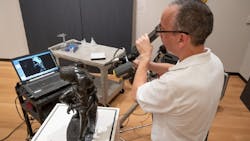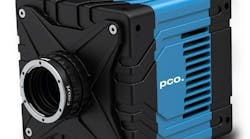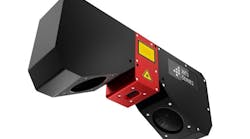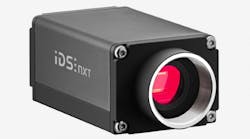NVision (Southlake, TX, USA) recently extended a helping hand —or rather, a mechanical arm and a 3D non-contact optical scanning system— to an artist working on bringing his 21st century perspective to a 19th century sculpture.
The artist, Hugh Hayden, was one of seven African American artists whom the Amon Carter Museum of American Art (Ft. Worth, TX, USA) invited to submit works for an exhibit: Emancipation: The Unfinished Project of Liberation. The artists were asked to draw inspiration from and build upon John Quincy Adams Ward’s 1863 sculpture, “The Freedman,” which depicts a soon-to-be-freed enslaved man.
Hayden’s idea was to make a 3D-printed mold of The Freedman for the modern era, revising Ward’s work to show the original figure in a more contemporary setting.
But the idea presented challenges. For one, traditional casting methods could alter the appearance or even damage the statue. Manual measurement was also unfeasible, given the scope and intricate detail of the statue.
Enter NVision. Not only does the company specialize in 3D non-contact optical scanning, but its employees also have experience working with art, especially sculptors and their creations.
“We do quite a bit of art,” notes CEO Steve Kersen. “Our end of the market is high accuracy 3D imaging – but artwork is a sideline.”
Working with the museum’s curators and conservators, NVision technicians scanned the 19 ¾” x 14 ¼” x 10 ½” sculpture using a NVision HandHeld scanner, a portable laser-scanning device attached to a mechanical arm, also built by NVision, that captures 3D geometry from objects of almost any size or shape.
The scanner not only can capture 60,000 separate spatial measurements per second; it does this with an accuracy of +\- 0.025 mm or 25 microns, which is +/- one-thousandth of an inch, less than the thickness of a single strand of human hair.
The scanner, which is attached to the mechanical arm controlled by an NVision technician, is connected to a laptop computer via several cables. The technician positions the mechanical arm, which is installed on a tripod, so that it can move around the object to be scanned. The scanner then moves around the object taking images and transmitting the raw image data to the laptop. The technician then processes the raw data on the laptop using the NVision intuitive software, into one or more STL files, depending on the size, scope, and intricacy of the project.
“What you get from your scan is called a point cloud,” Kersen explains. “When we come back from doing the scan, the engineers then do a clean-up of the point cloud to get rid of extraneous material to turn it into what is called a “watertight” STL file. The artist then can take that STL file and modify it.”
The entire process, from scanning to watertight STL file, can take a few hours or several days, depending on the parameters of the project.
A technology from Adobe (San Jose, CA, USA), STL stands for stereo lithography, which is a format used to save images for CAD and 3D printing. Each file is made up of a series of linked triangles that describe the surface geometry of a 3D model or object. The more complex the design, the more triangles used, and the higher the resolution.
A copy of the STL file(s) is provided to the artist, who can then edit or manipulate it and then use it to build or “print” a 3D model using a 3D printer.
In this case, the artist, Hayden, was able to take a nearly perfect STL file reproduction of the original statue and edit/manipulate it to add his modern articulation; for example, the original figure is shown wearing little clothing and shackle cuffs still on his wrists, although the chains are broken, while Hayden’s version removes the shackles completely and has the man, while similarly posed as the original, now sitting in an Adirondack chair and clothed in modern casual attire.
Hayden then used a 3D printer to construct his creation out of a hard plastic material.






